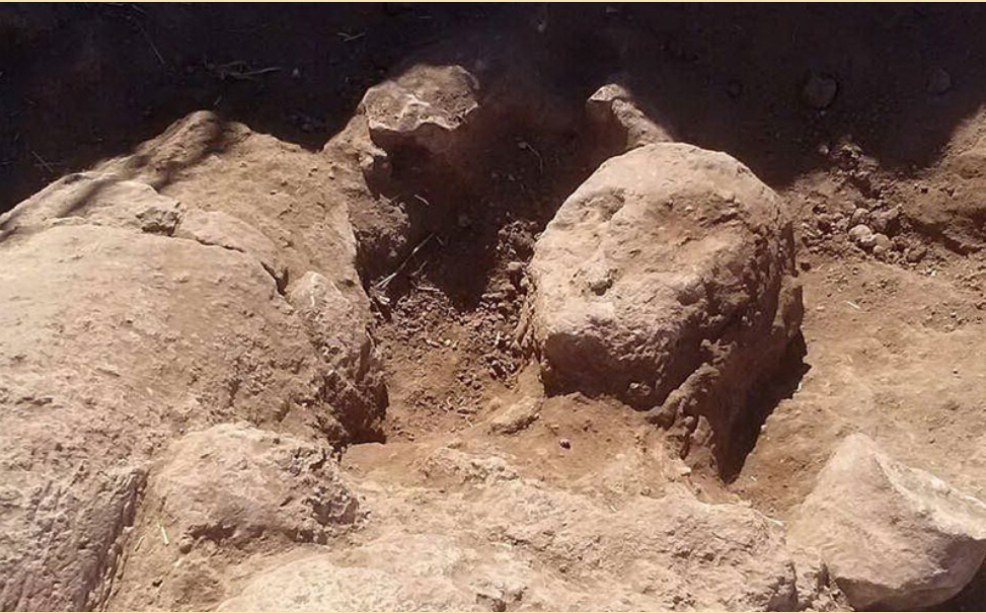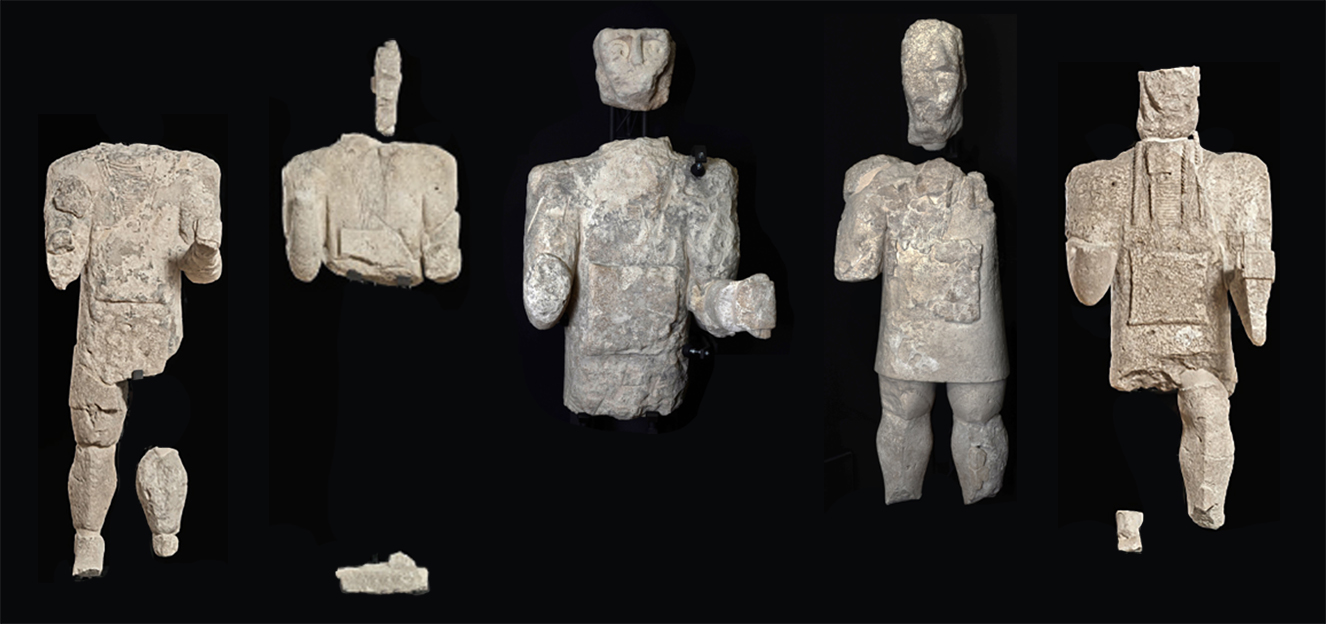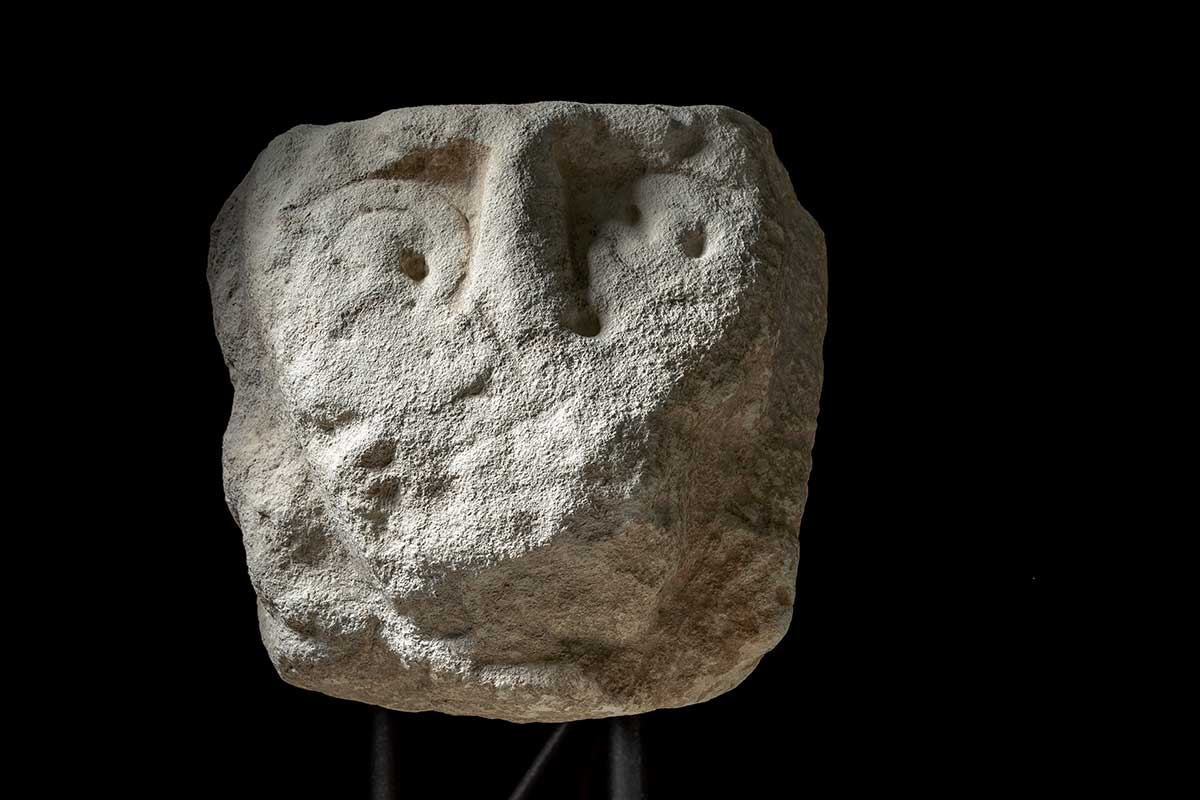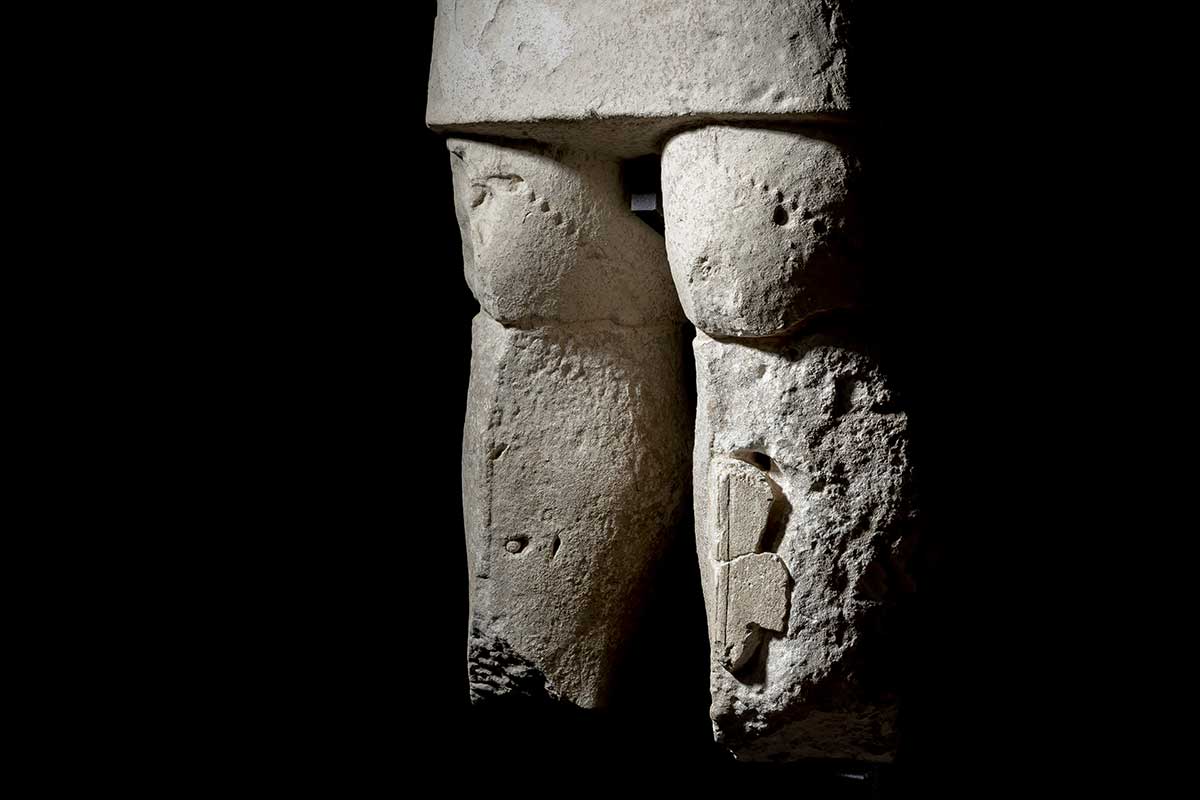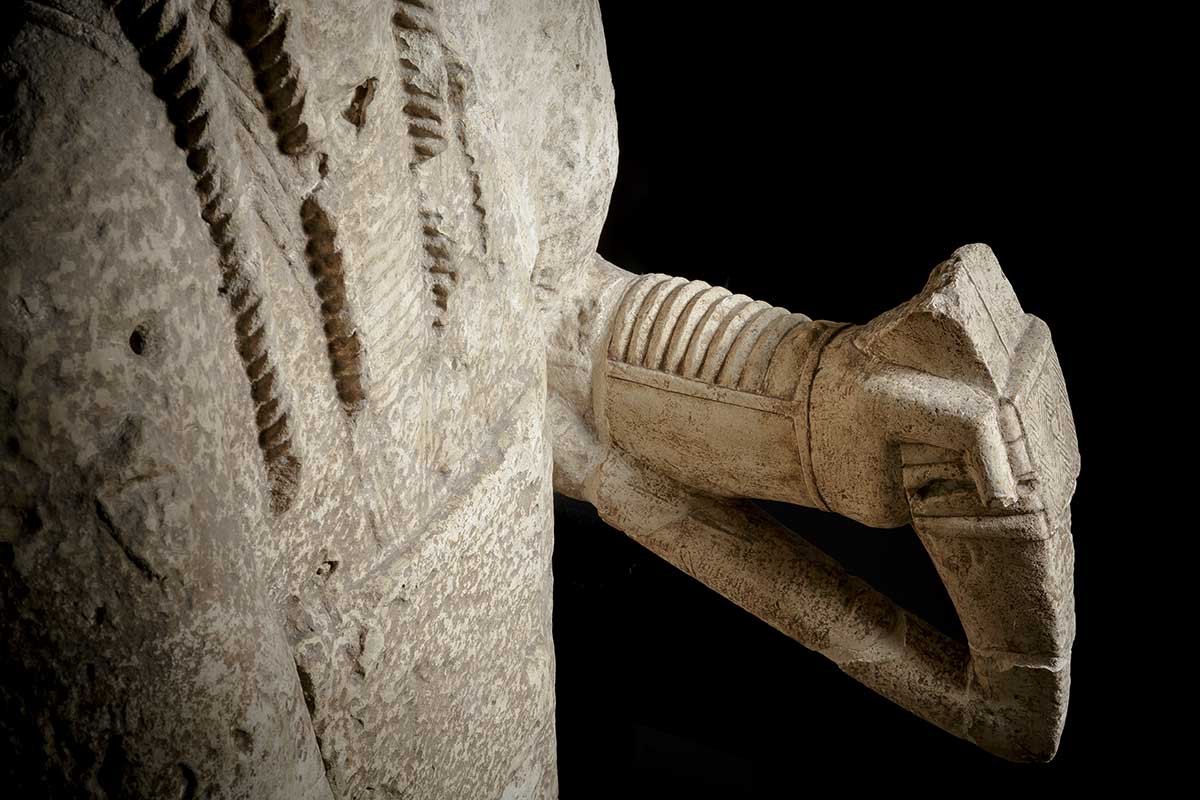Archers
The type represented is that of the praying archer known from bronze statuettes.
Indeed, comparison with the bronzes has been very useful for reconstruction of the missing parts of the stone statue.
Unfortunately, since we have no well-preserved heads, we can only assume they were similar to those of the warriors.
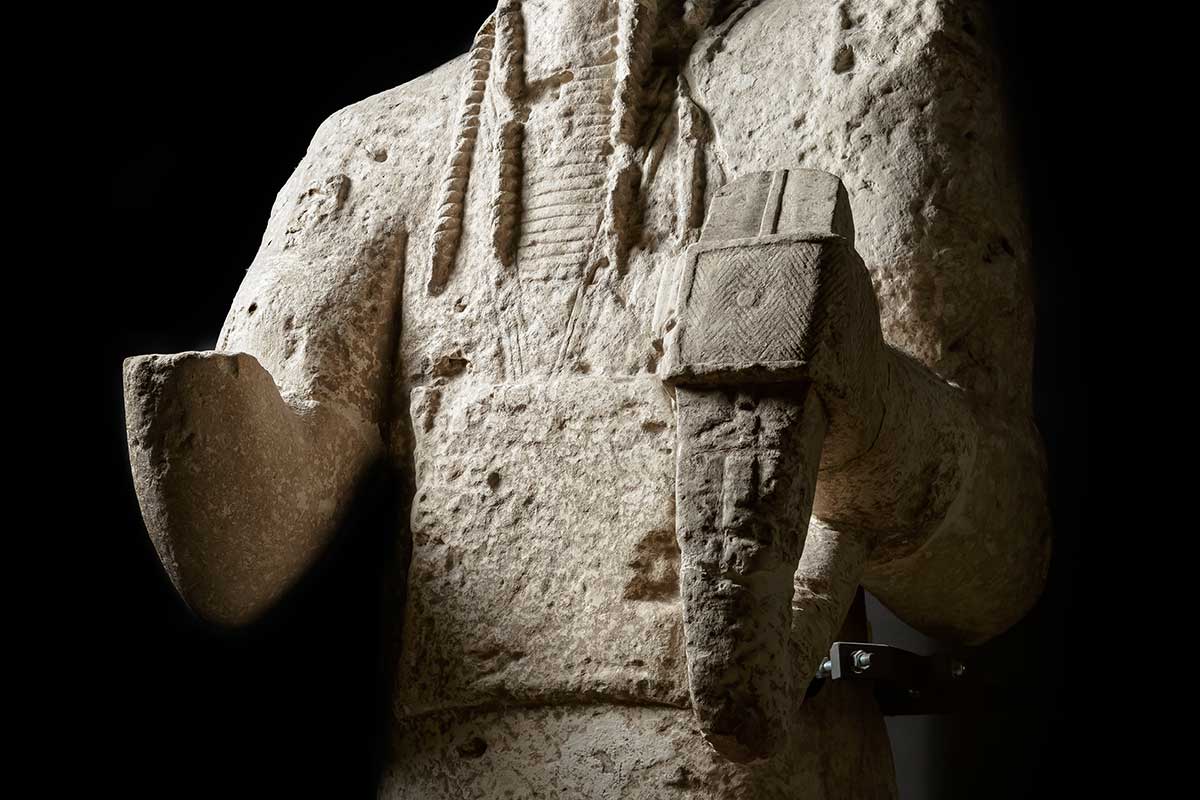
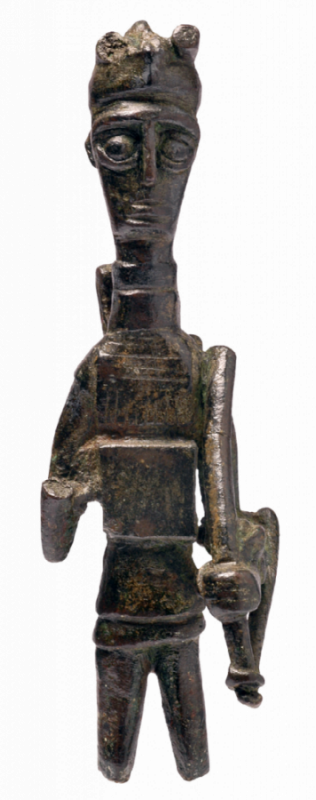
The attitude is that of a greeting, with the right arm bent at the elbow and the hand raised in the gesture of greeting/devotion/offering.
With the left, the archer holds his bow resting on his shoulder; the hand is protected by a glove decorated with a relief zigzag pattern, which leaves the fingers free. The forearm is protected by an arm guard, depicted by a dense pattern of triangles, probably indicating an animal skin.
The bow has a thick string and, on the front, a small strip in relief which runs over its whole surface.
The archers, many of which also have long plaits of hair falling on their chest, wear a short tunic leaving bare part of the thighs. Their trunk is protected by a pectoral, square and with concave sides. Triple strings hold the pectoral, and a motif of closely spaced horizontal lines completes it.
The calves are well protected by shin guards, while the feet are bare. In some statues, the back of the armour is decorated by bands of horizontal fish-bone motifs. In other statues, the back of the legs is carved to represent the strings holding the shin guard, with an eight-shaped design.
To the front, the shin guard reaches above the knee and ends with a strap reaching under the tunic. The archers are barefoot, with their feet set parallel on the base; the legs are not joined but separate and meet at the feet.




